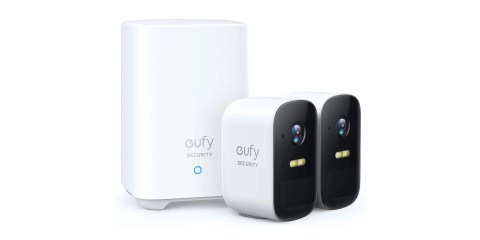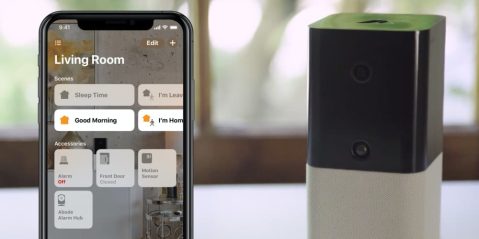
Today, Jamf held a special event, which was live-streamed for all its customers, and covered a wide range of updates aimed at providing assistance to businesses, schools, and government entities in using Apple products. Jamf also announced some additions for Windows users as well..
In 2022, Mac, iPad and iPhone all experienced substantial gains in marketshare worldwide, as more and more people embrace using the same technology as both a consumer and as a worker — whether their employer provides a Choose Your Own Device program or as part of a Bring Your Own Device initiative,” said Dean Hager, Jamf CEO. “In either case, Jamf offers the right balance of simplicity, privacy and security. And with work-from-anywhere models here to stay, empowering users to help themselves, and empowering IT and InfoSec teams to serve their customers without ever needing to physically touch devices has never been more important.
Simplified user access with new functionality and key partnerships
Jamf Connect, a popular solution for provisioning and authentication, has now been equipped with zero trust network access capabilities that enable organizations to deliver a complete, user-first identity and access management solution for their devices. With this new functionality, users can access their devices remotely from anywhere, eliminating the need for traditional VPNs and reducing the frustration associated with them. The app also enables access to only specific apps and resources required for each person’s role
In addition, Jamf announced its integration with Jamf Trust to automatically activate a secure network connection once a user finishes the macOS setup assistant. With this feature, users can log in once to create their local macOS account with cloud identity credentials, and their network access will be ready for instant connectivity.
Jamf’s strategic partnership with Okta expands to deliver identity security for macOS devices, thanks to Apple’s Platform Single Sign-On. Okta password sync is activated through the platform, along with Okta Verify and Okta FastPass, while Jamf Connect securely provisions local macOS user accounts using Okta credentials. Also, Jamf has enhanced the login security on BYOD with Enrollment Single Sign-On, allowing users to use using FaceID or TouchID to access all their company apps on their personally owned devices through Okta.
Finally, Jamf has announced the general availability of Employee Badge with Jamf Trust, which places digital employee badges in digital wallets and does away with physical access cards. This partnership with SwiftConnect makes it possible for iOS users to take advantage of Employee Badge with Jamf Trust right away, with support for Android coming soon.
Updates to ensure protection against malware and user-initiated attacks
Jamf’s latest updates include new conditional access controls with Microsoft, Google, and Amazon. These integrations allow organizations to extend access controls across the entire workflow and bring powerful and granular access controls to company resources. With the Microsoft Device Compliance integration, Jamf allows organizations to monitor and protect their Mac fleet through the Microsoft Sentinel platform, providing a unified view of security events across all endpoints and facilitating a more effective response to threats.
Jamf’s integration with Google BeyondCorp has also been extended to iOS and iPadOS devices, providing compliance and compromise protection across all devices. With AWS Verified Access, organizations using AWS and Jamf can verify that devices are managed and meet an acceptable risk threshold before providing access to AWS apps, instances, or workloads.
In addition to these integrations, Jamf has also introduced a platform integration for real-time access policies. These access policies react the minute that Jamf Protect detects a risk, stopping access to sensitive resources and shutting down the user’s connection. Jamf’s latest enhancement also allows organizations to detect if a user ever disables their secure connection and immediately suspends their access, ensuring that access to a particular resource requires a secure connection.
New updates to help IT manage devices fleets efficiently
With the new Jamf Remote Assist feature, admins will be able to initiate a secure remote desktop session directly from the Jamf Pro UI, regardless of where the users are working from. This will help simplify admin workflows and support a better remote and hybrid work experience for end users.
To improve macOS security, Jamf Pro has introduced a new automated solution that allows admins to create and manage unique local administrator passwords per each managed Mac device. With the increasing risk of unauthorized access to sensitive data or systems, having unique passwords that are not reused is extremely important, and this feature will help maintain operational security, comply with industry regulations, and improve efficiency when working with an IT-managed administrator account.
Jamf also announced updates to their App Installers that will enhance app safety for end users. With the launch of end-user notifications, IT can now notify users when an update is available for a software title deployed using App Installers. Coming this summer, Jamf Pro will offer the option to distribute App Installer titles via Self Service and allow users to install whenever they are ready. Once installed, App Installers will continue to keep that app title automatically up-to-date with the latest software version. These updates will ensure that apps are always updated and secure, providing a seamless experience for both IT and end users.
Also this summer, Jamf is set to release Jamf Safe Internet for Windows PCs. This feature will enable schools and other organizations using Windows PCs to deploy Jamf Safe Internet to their fleets.
FTC: We use income earning auto affiliate links. More.








Comments